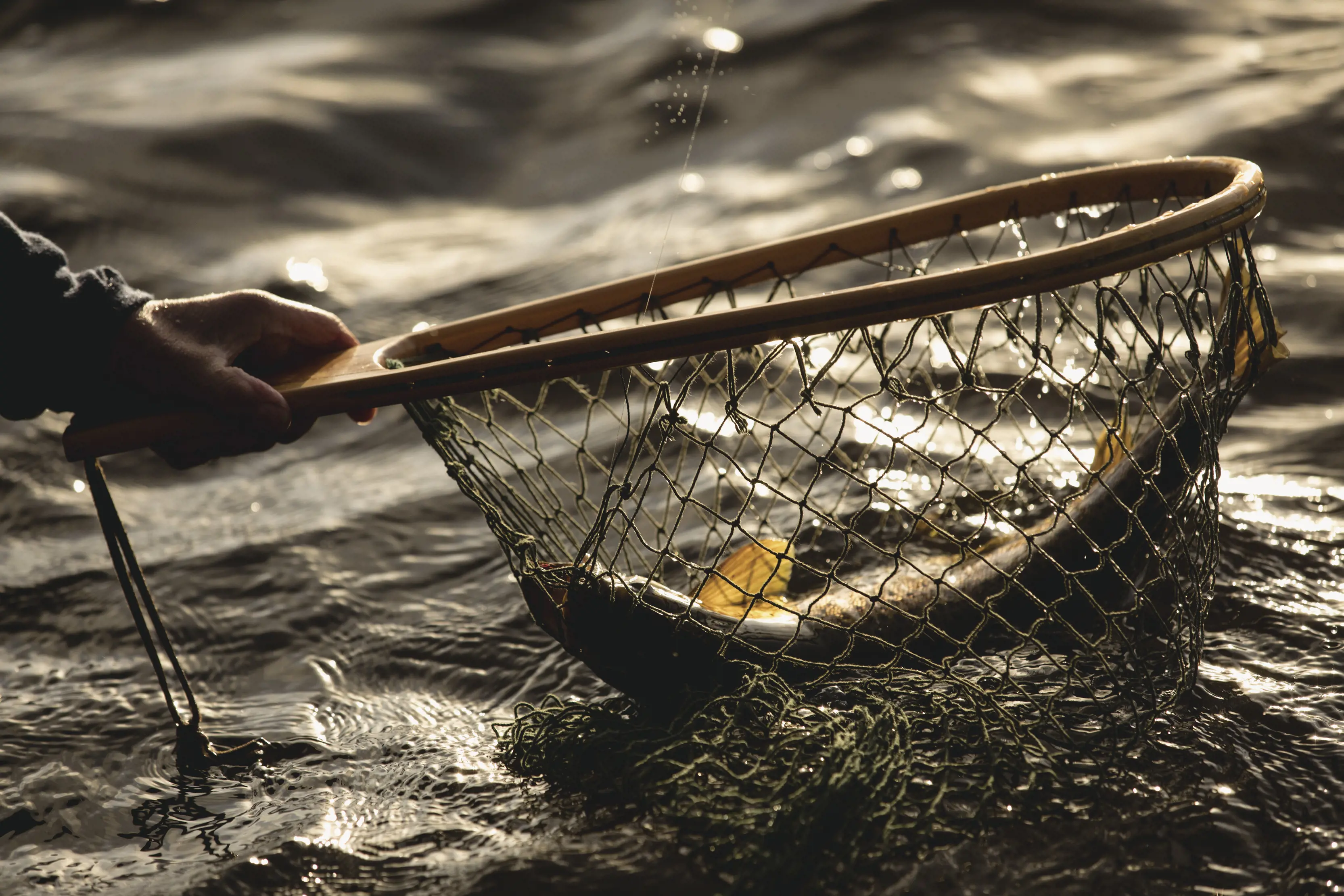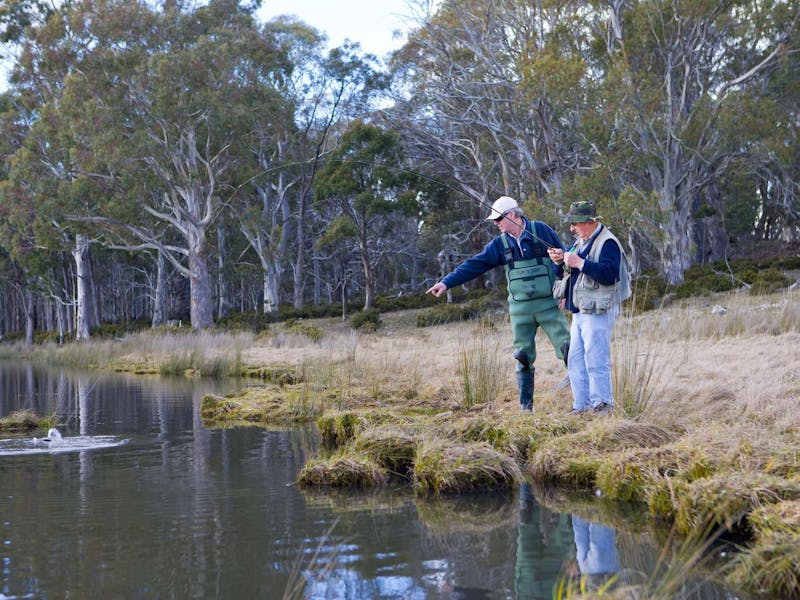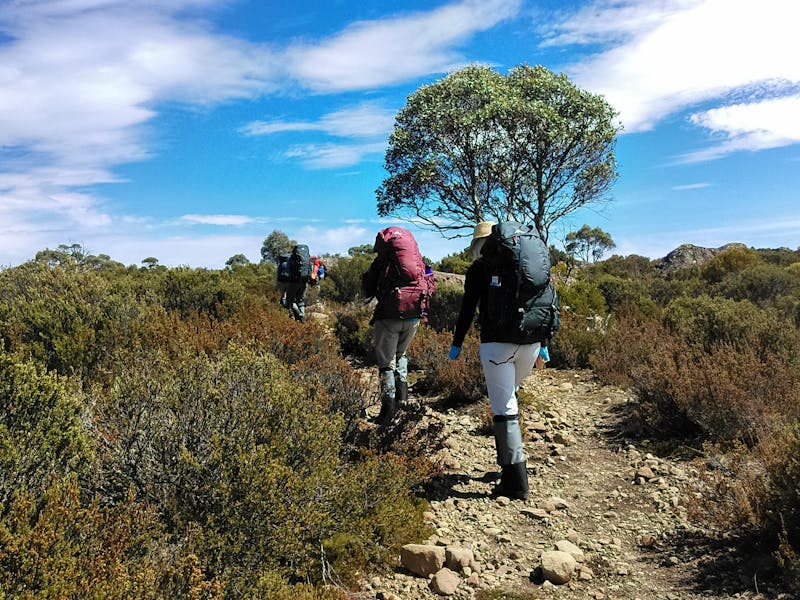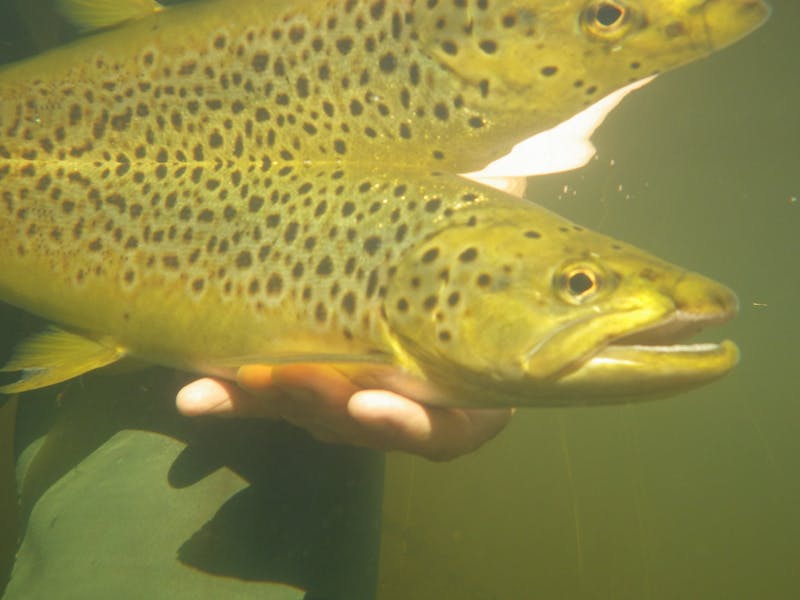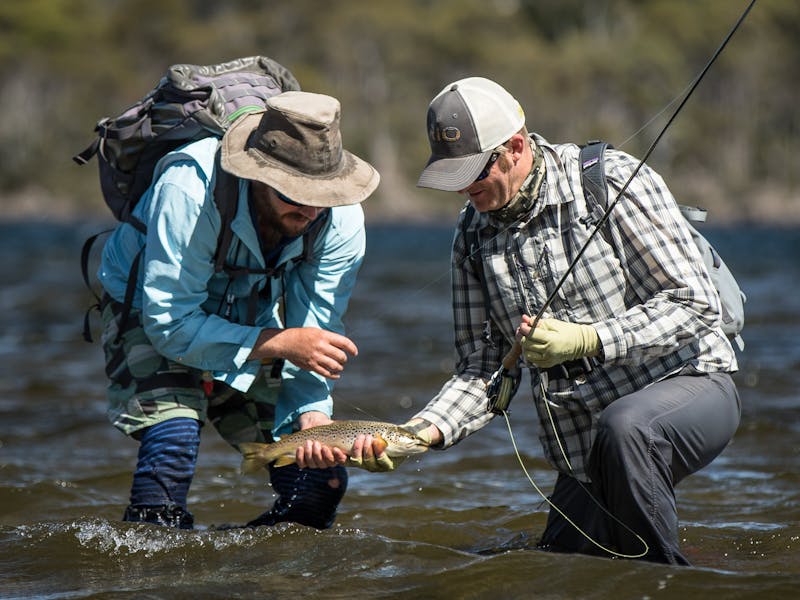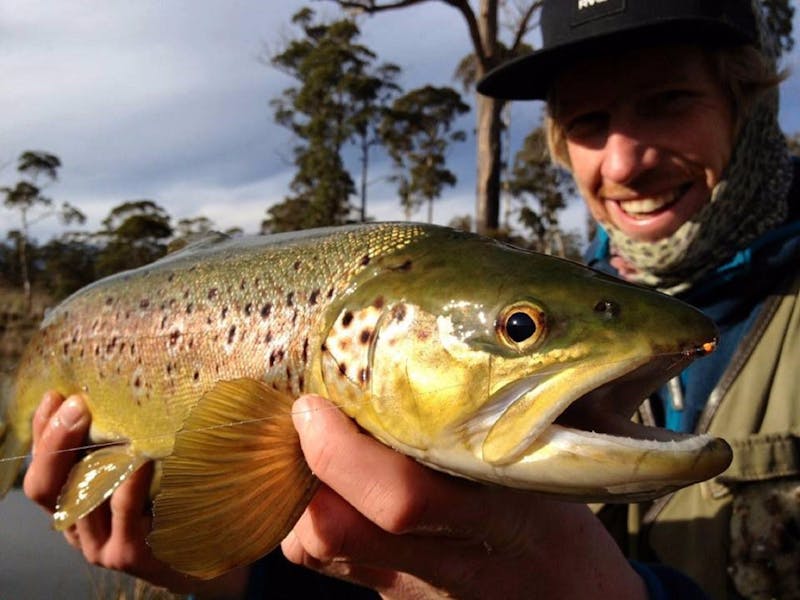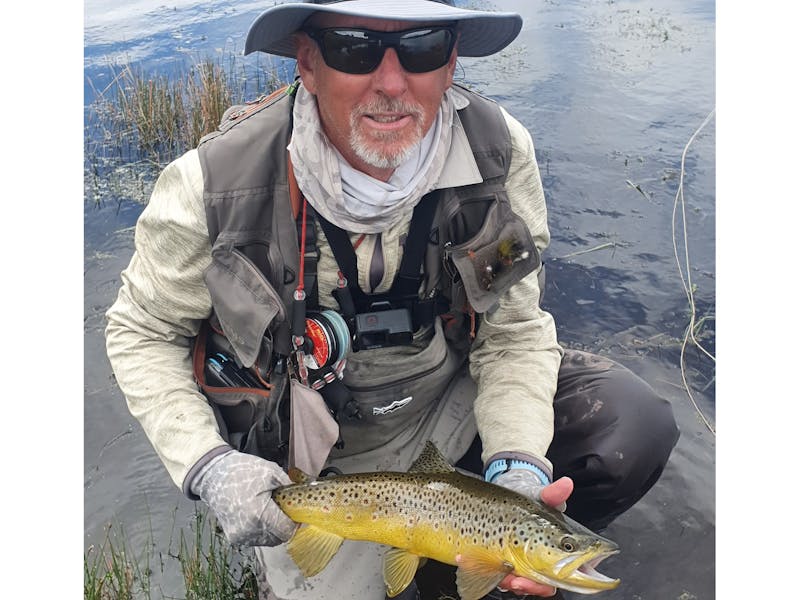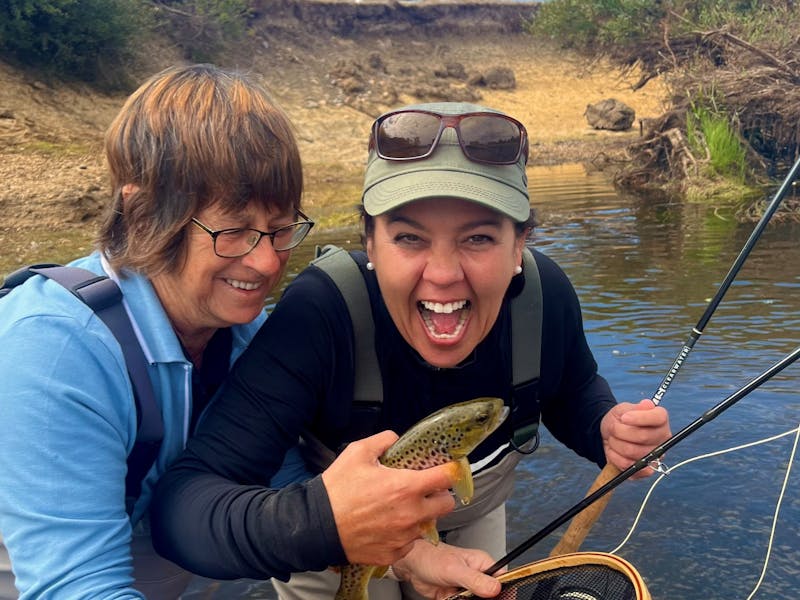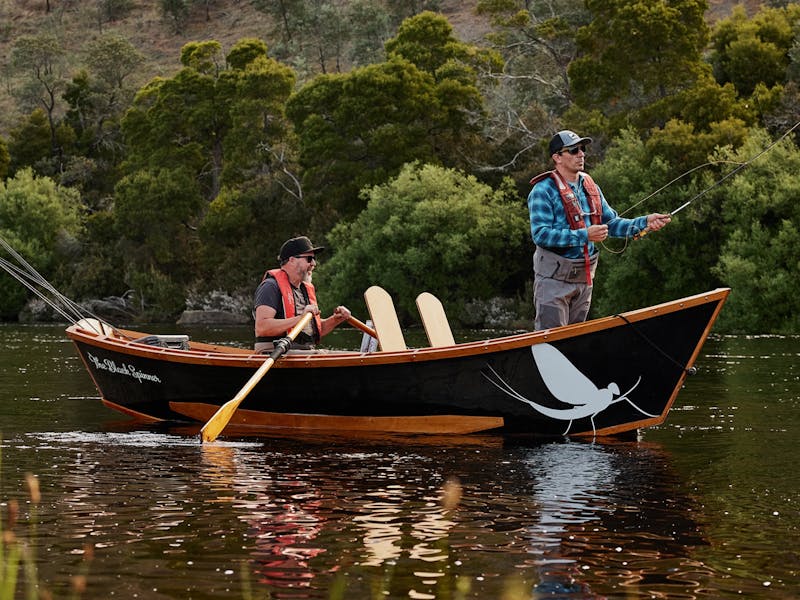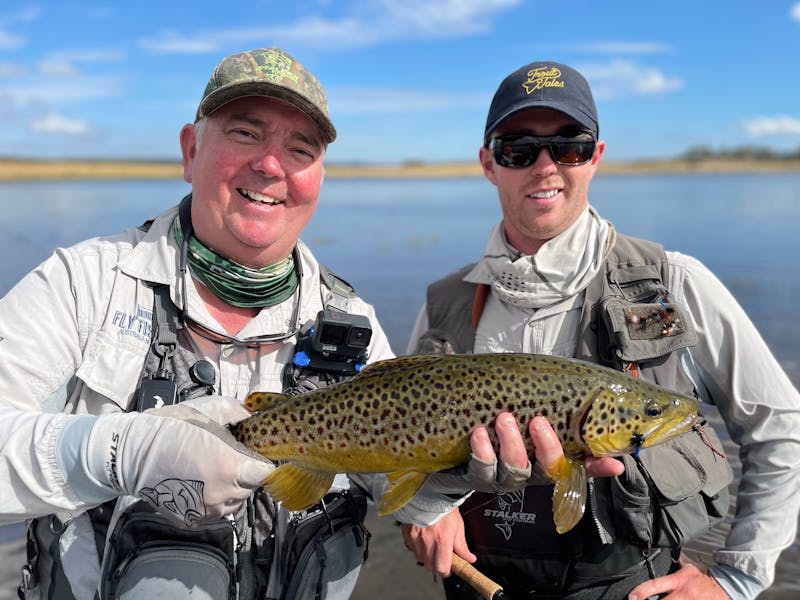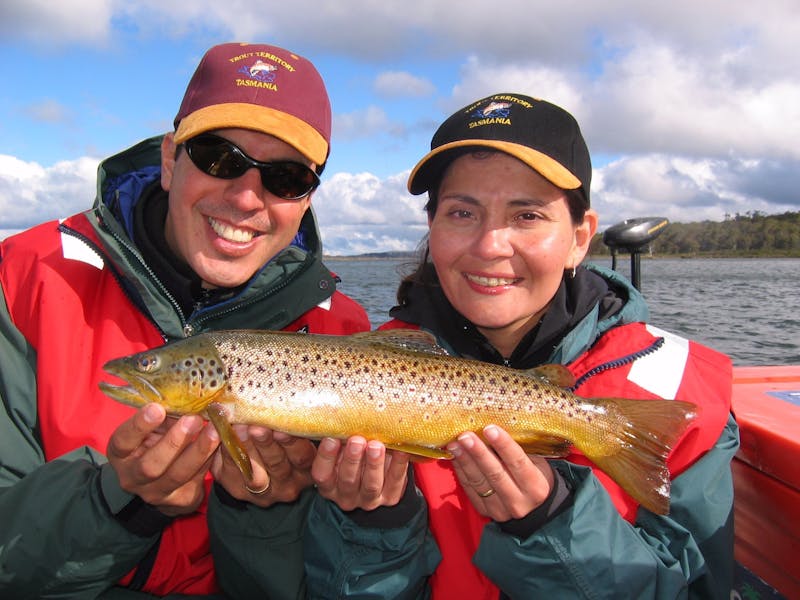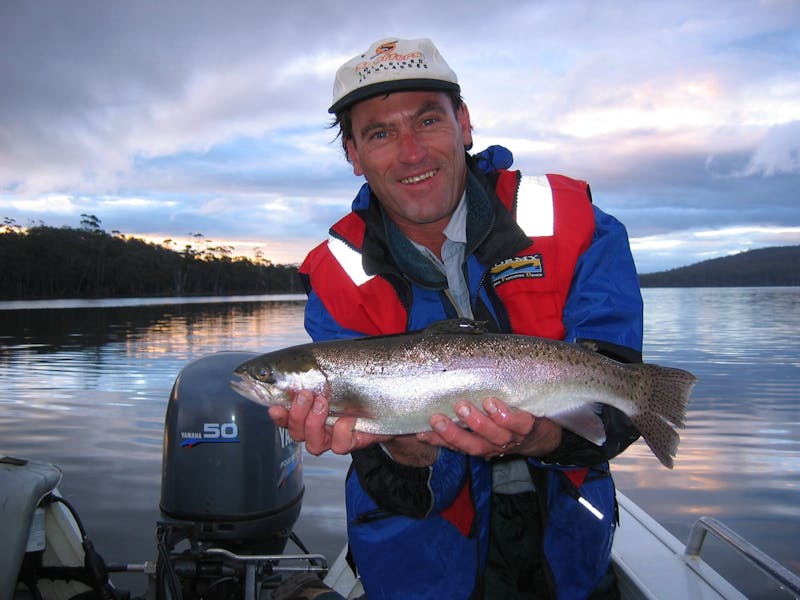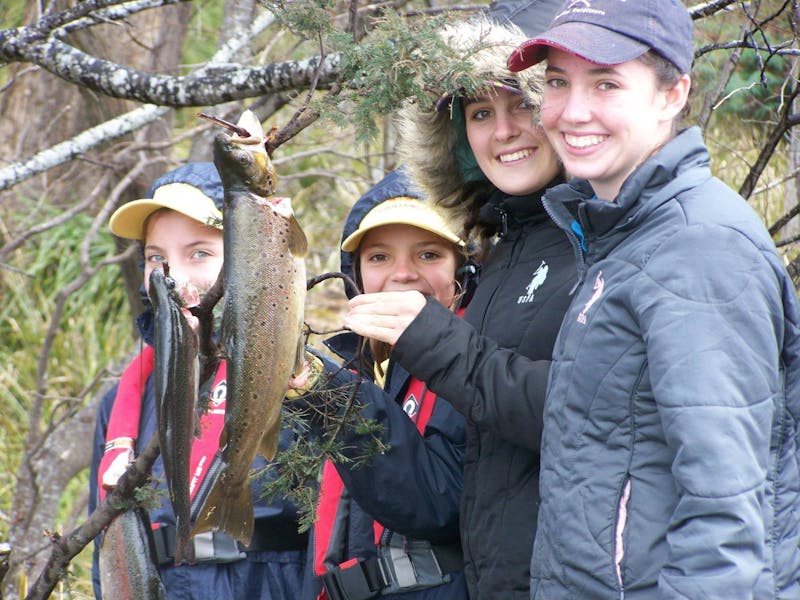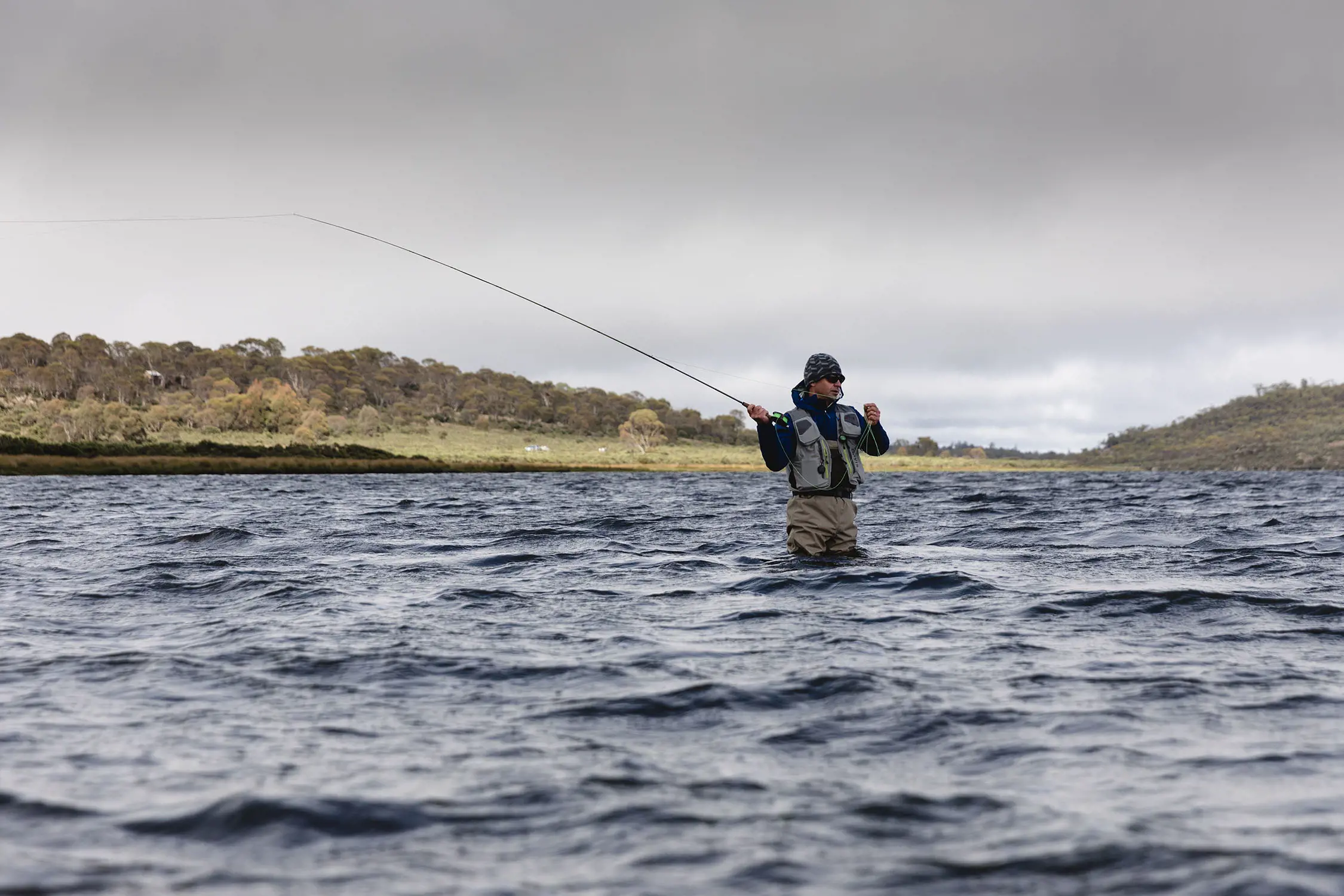
In Tasmania, fly fishers can choose from expansive estuaries and swift rivers, creeks and crystal-clear lakes and remote tarns.
While these top fishing spots, located in World Heritage landscapes, are within easy travelling distance from Hobart and Launceston, you can’t have a successful fishing trip without the fish. So it's vital to have some insider tips on how to fly fish in Tasmania and the top spots to cast a line.
Here's a quick overview to help you match the hatch at Tasmania’s best fly-fishing destinations.

Nineteen Lagoons
Lying in a wild and stark landscape of highland moors, just west of Yingina / Great Lake on the Central Plateau, the Nineteen Lagoons are one of the most accessible regions of the western lakes. Big, wild trout in clear water are the main attraction.
It’s a rare day at the Nineteen Lagoons that anglers wouldn’t see brown trout cruising, tailing or rising to insect hatches, and sight-fishing here is considered by many to be the pinnacle of the sport. It’s a style of fishing more akin to hunting, so be prepared to walk, explore and target individual fish rather than just fish the waters.
Lake Ada, Lake Kay and Lake Botsford offer a great introduction to the Nineteen Lagoons with polaroiding, mayfly fishing and easy access (Lake Kay is a short walk). Other lakes, including O’Dells, Flora and Talinah Lagoon, require a short to medium walk.
Nineteen Lagoons is part of the Tasmanian Wilderness World Heritage Area, so expect to share your days with wombats, wallabies, echidnas, wedge-tailed eagles and platypus.
Getting here
Access to the Nineteen Lagoons is via Liawenee, which lies near the western shore of Yingina / Great Lake. A seasonal gate at Lake Augusta is opened annually in spring; check with Inland Fisheries Service for exact dates, which change each year.
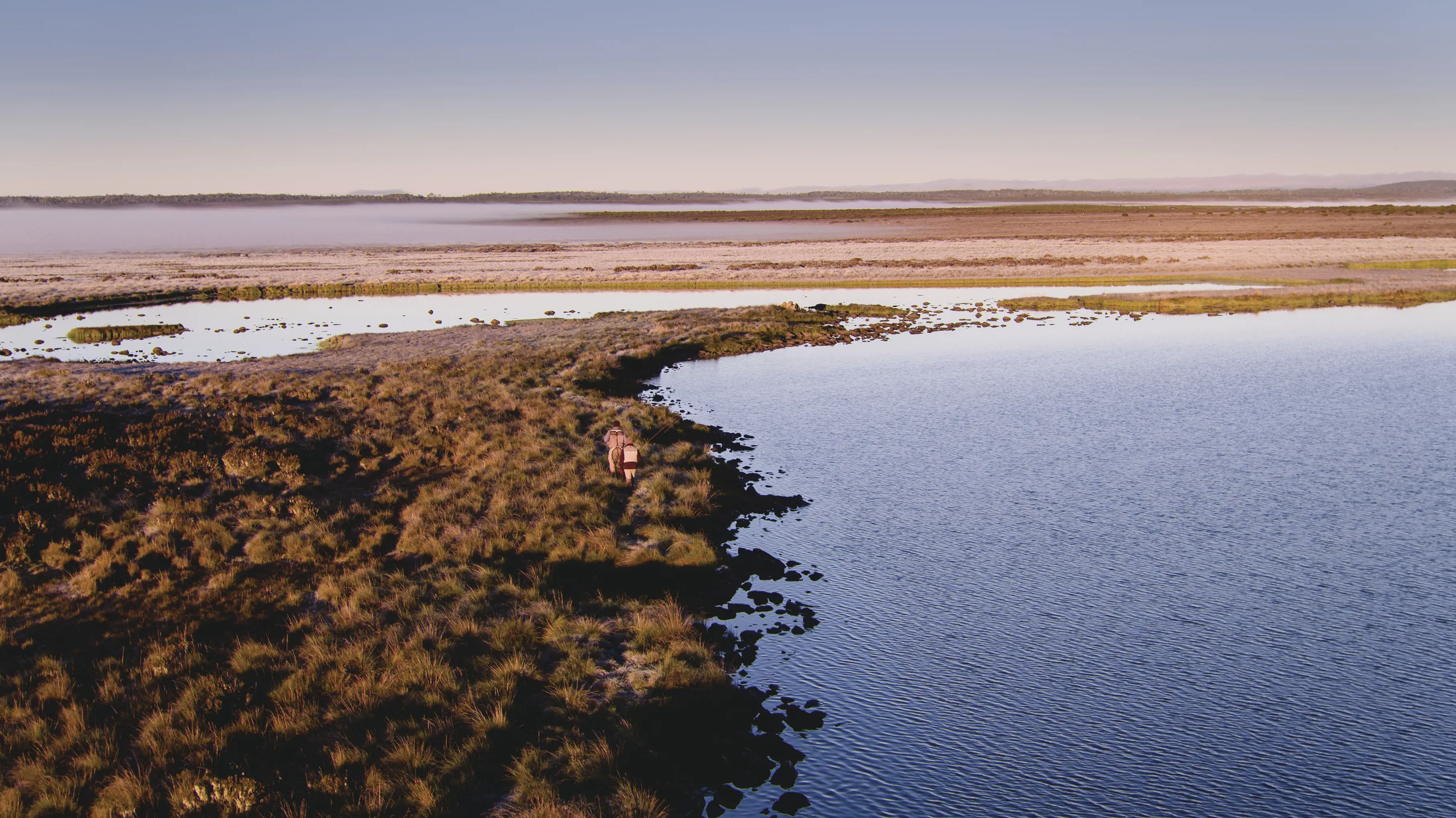
Little Pine Lagoon
A sparkling gem south-west of Yingina / Great Lake, Little Pine Lagoon is one of just a few Tasmanian sites reserved entirely for fly fishing. “The Pine”, as it’s often called, is shallow, weedy and the colour of a peaty Tasmanian single malt. It’s hard to imagine that the little dam across the river has helped create what many believe to be the best trout water in the Southern Hemisphere.
The lagoon lies in a small basin in the shadow of Skittleball Hill, and has some of the best hatch-driven sight-fishing on the Central Plateau. An almost perfect spawning stream makes the lagoon a virtual wild brown fish factory producing consistently great trout, all season long.
Getting here
Little Pine Lagoon is about 10km west of Miena, on Marlborough Rd.

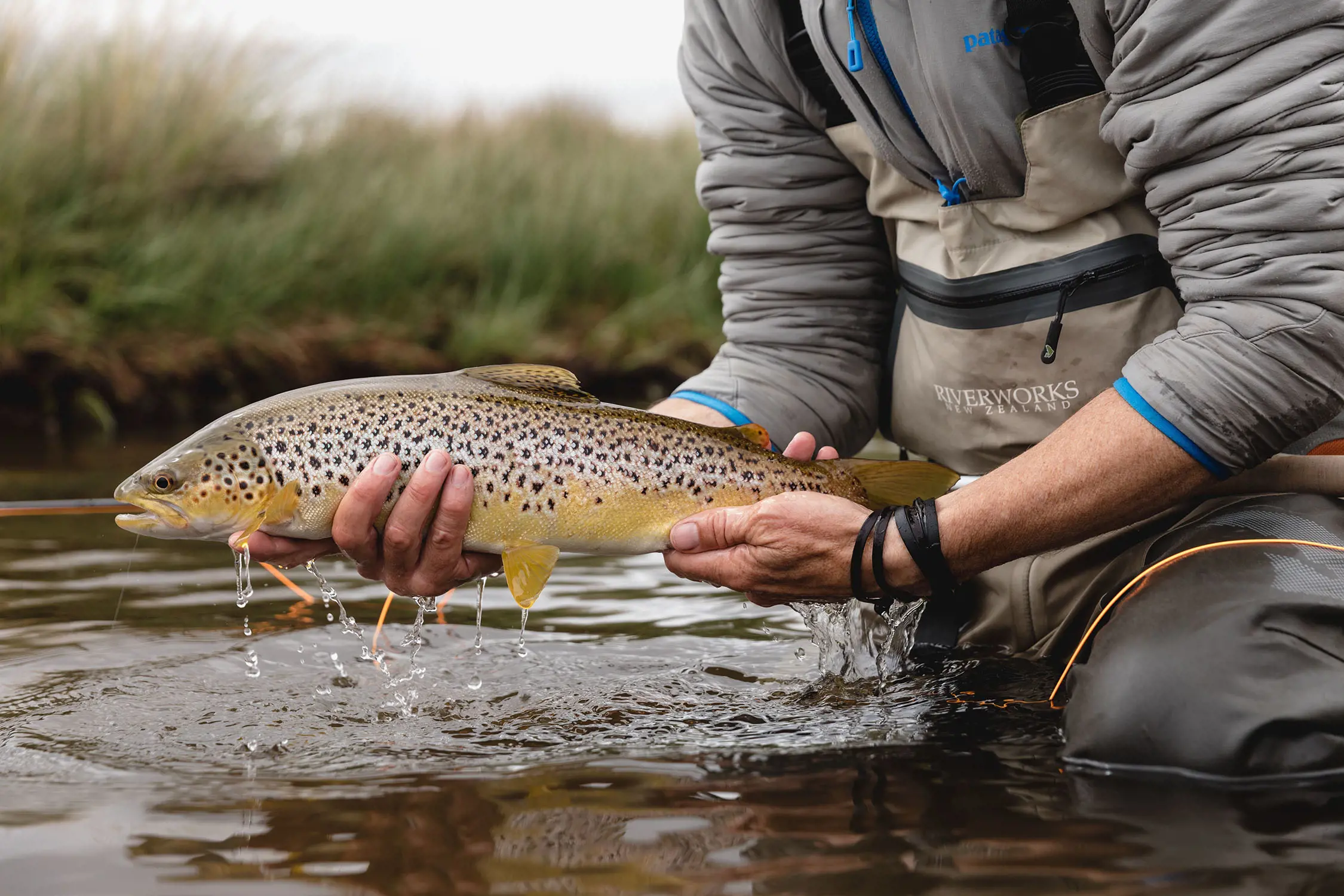
Meander River
Winding through the central north of Tasmania, the Meander River is a popular fishing stream for both brown and rainbow trout. The damming of the river at Lake Huntsman produces cool, even flows and clear waters that create consistently good fly fishing, all season long. It offers plenty of diversity over a relatively short journey, and you could easily spend a week or longer exploring.
Below the dam, the river is still a rough-and-tumble affair, with banks mostly untouched by man or machine. The river’s flow takes effort to cross, but the current is regulated, making it a superb trout fishery.
As the river flows from the dam wall to join with South Esk River near the town of Carrick, its character changes with the landscape. The river bubbles and murmurs over boulders, rocks and pebbles to Deloraine and becomes a true tailwater with runs, pools and vigorous trout.
Downstream from Deloraine, the river slows down, stretches out and opens into a classic meadow stream – slow and gentle, with big broad waters that hold some spectacular trout.
Getting here
The Meander River has many convenient entry points along its entire length.
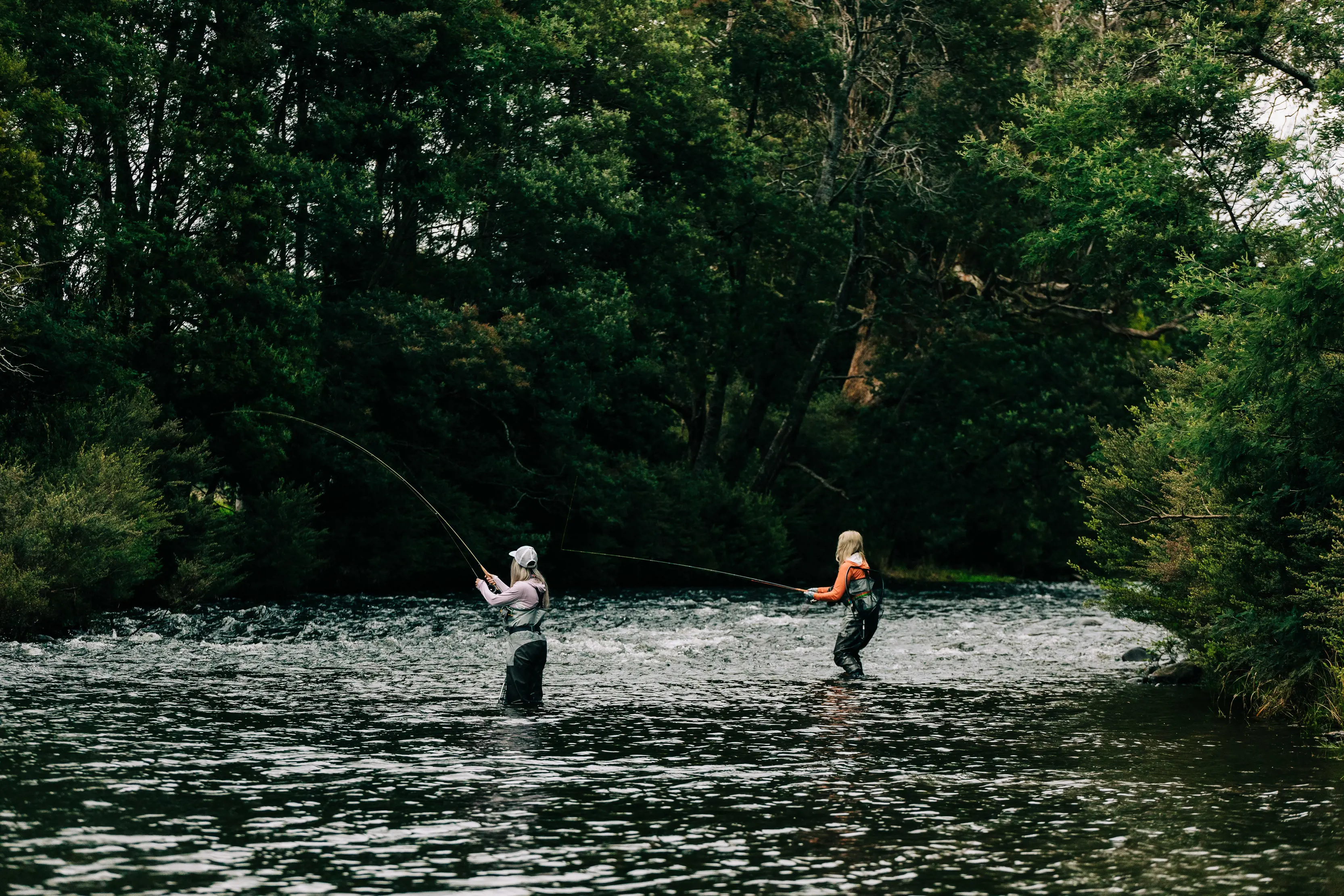
St Patricks River
“St Pats” is a freestone river north-east of Launceston with crystal-clear waters and a mix of farmland and forested banks. It’s one of the most revered rivers in the state, producing prolific large wild brown trout and quite a few rainbows.
Many consider it the perfect trout stream, with its classic “ripple, pool, run” structure filtering through nutrient-rich forests to produce a very healthy fishery. The water flows freely around fallen trees, log jams and through natural rocky pools, offering something for everyone.
Easily crossed from bank to bank, St Pats is a very approachable river. The ability to see the glistening gravel and dark pebbles in most parts of its run means its quirks (and sight-fishing opportunities) are always on display.
Getting here
The river has several entry points between Nunamara and Corkerys Rd, with numerous bridge crossings. There are farms along the river – please respect farmers by sticking to the river and using the designated angle access points.
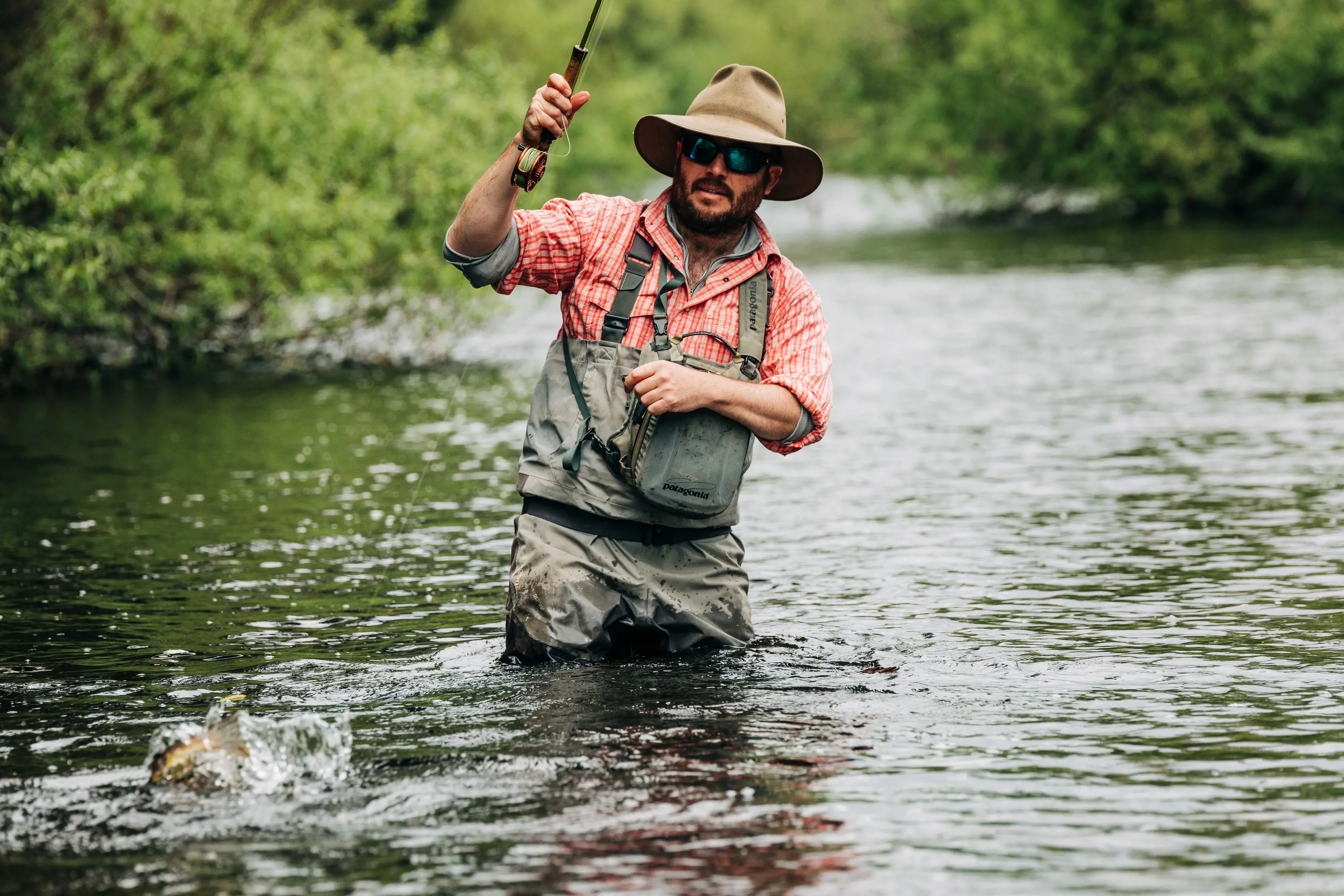
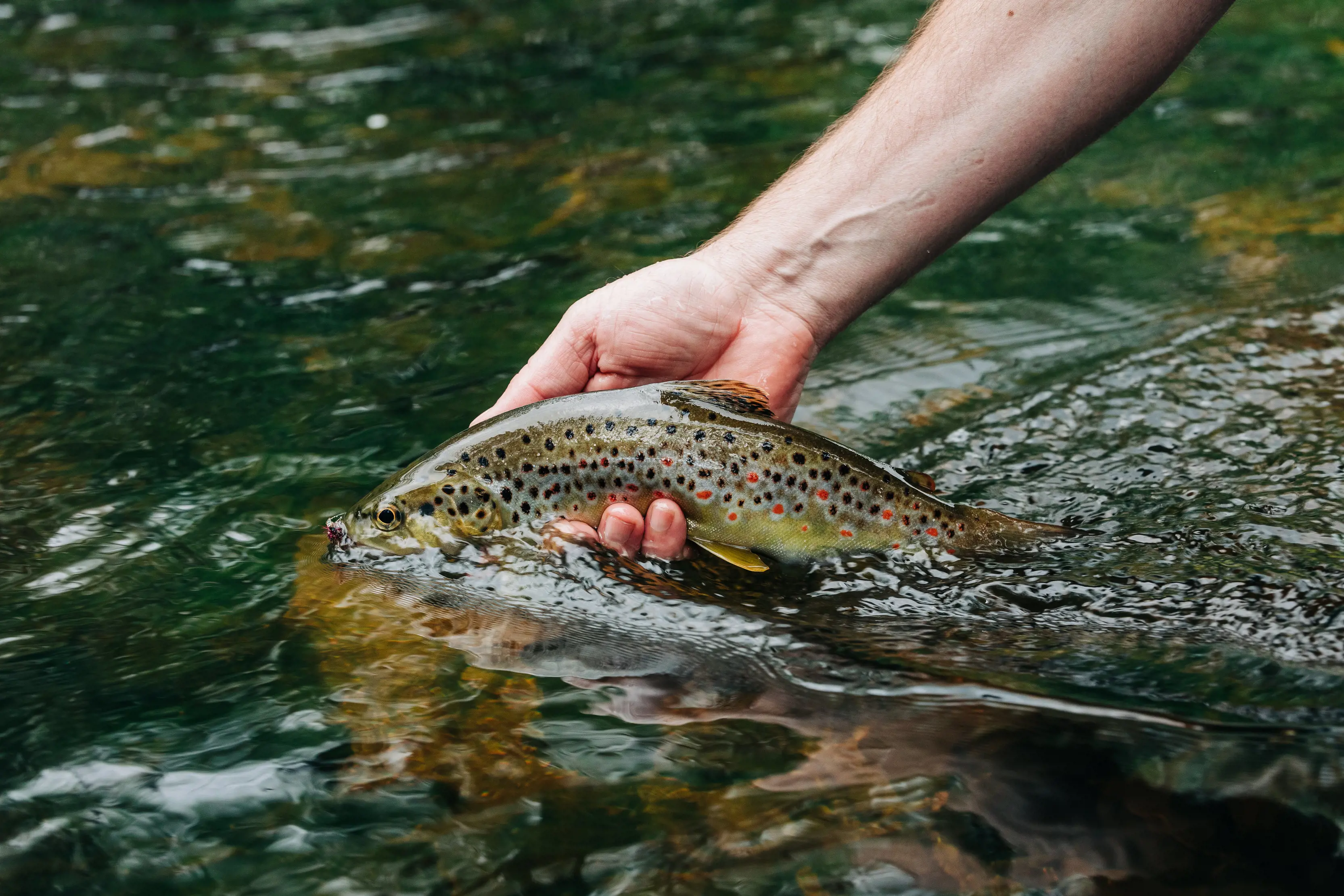
Penstock Lagoon
This fly-only lagoon has long been a popular spot. The fish here grow fast and strong and provide great sport for dry- and wet-fly fishing. The fish are stocked as fry from wild strain stocks and are triploided to produce fast-growing and fit specimens.
Getting here
Penstock Lagoon is beside Waddamana Rd, south of Arthurs Lake.
Yingina / Great Lake
Yingina / Great Lake has a huge population of brown and rainbow trout and its shores offer good wet-fly fishing. Beetle falls provide dry-fly fishing, particularly in open water. The open-water polaroiding of trout cruising wind lanes is as good as you’ll find anywhere.
Getting here
Highland Lakes Rd, the main road across the Central Plateau, skirts the shores of Yingina / Great Lake.
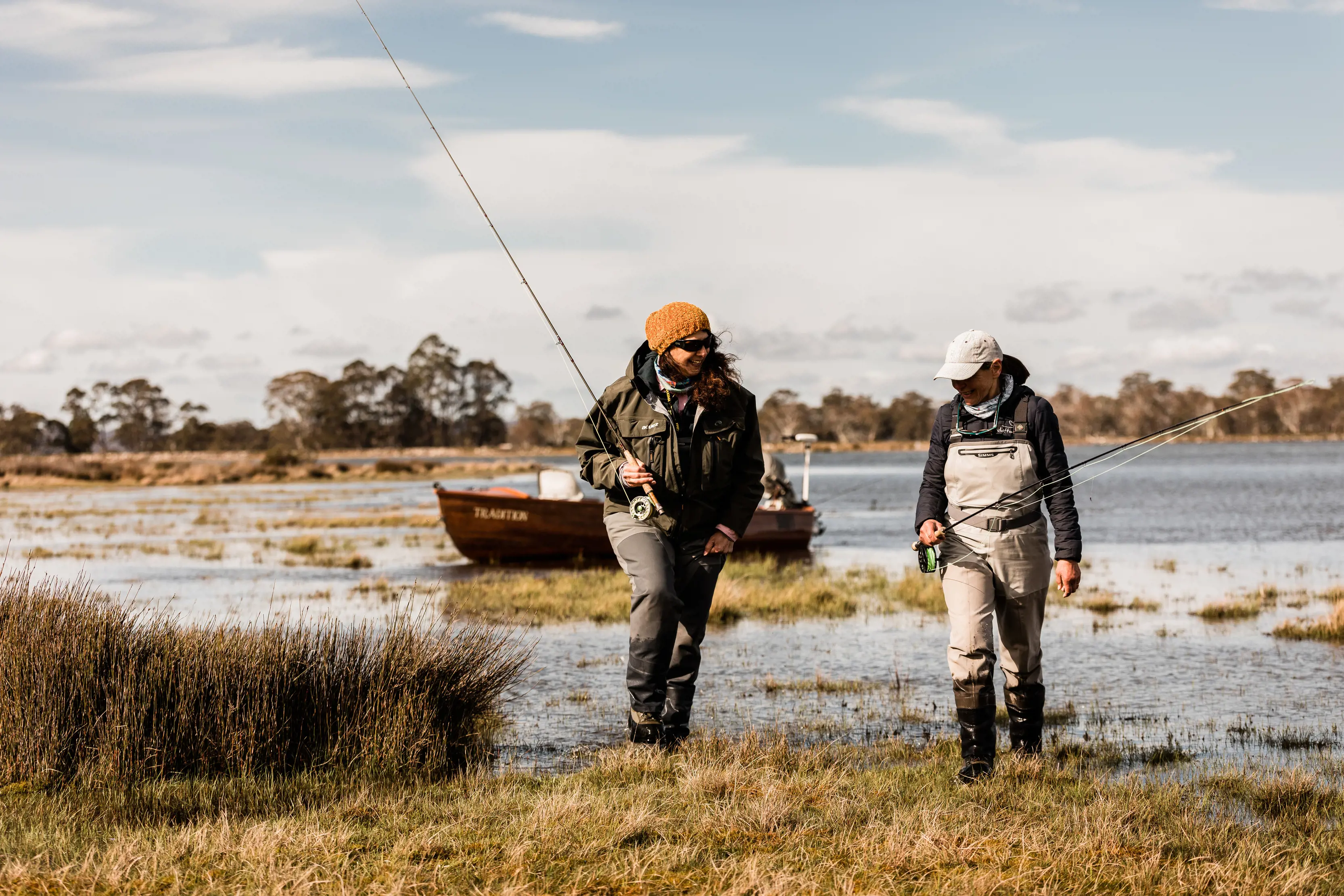
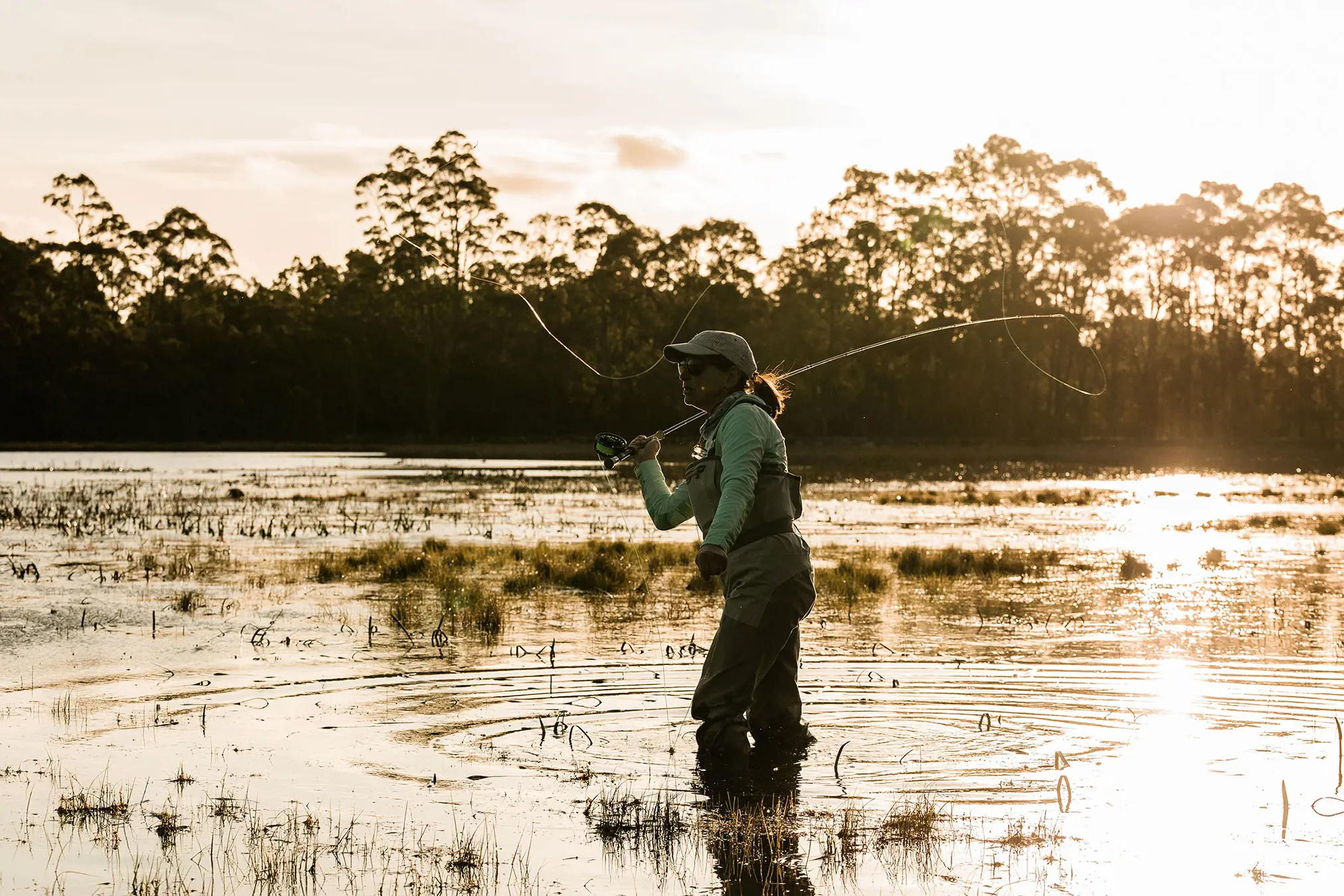
Arthurs Lake
Arthurs Lake offers nearly everything a fly fisher could want, and the catch rate can be outstanding. Whether dry-fly fishing the hatches, nymphing wind lanes, or wet-fly fishing the galaxias feeders, the action at Arthurs can be red hot.
Getting here
Arthurs Lake is 5km off Highland Lakes Rd, via Poatina Rd.
Lake Burbury
This west coast lake outside Queenstown is managed as a wild trout fishery and open year-round. It has wild rainbow and brown trout populations. The feature at Lake Burbury is early-morning fishing, particularly during spring, for midge feeders. Rainbow trout can often be found cruising wind lanes and offer exciting fishing from a boat. There’s also plenty of dead timber for targeting mudeye feeders.
Getting here
Lake Burbury is crossed by the Lyell Hwy, 18km east of Queenstown.
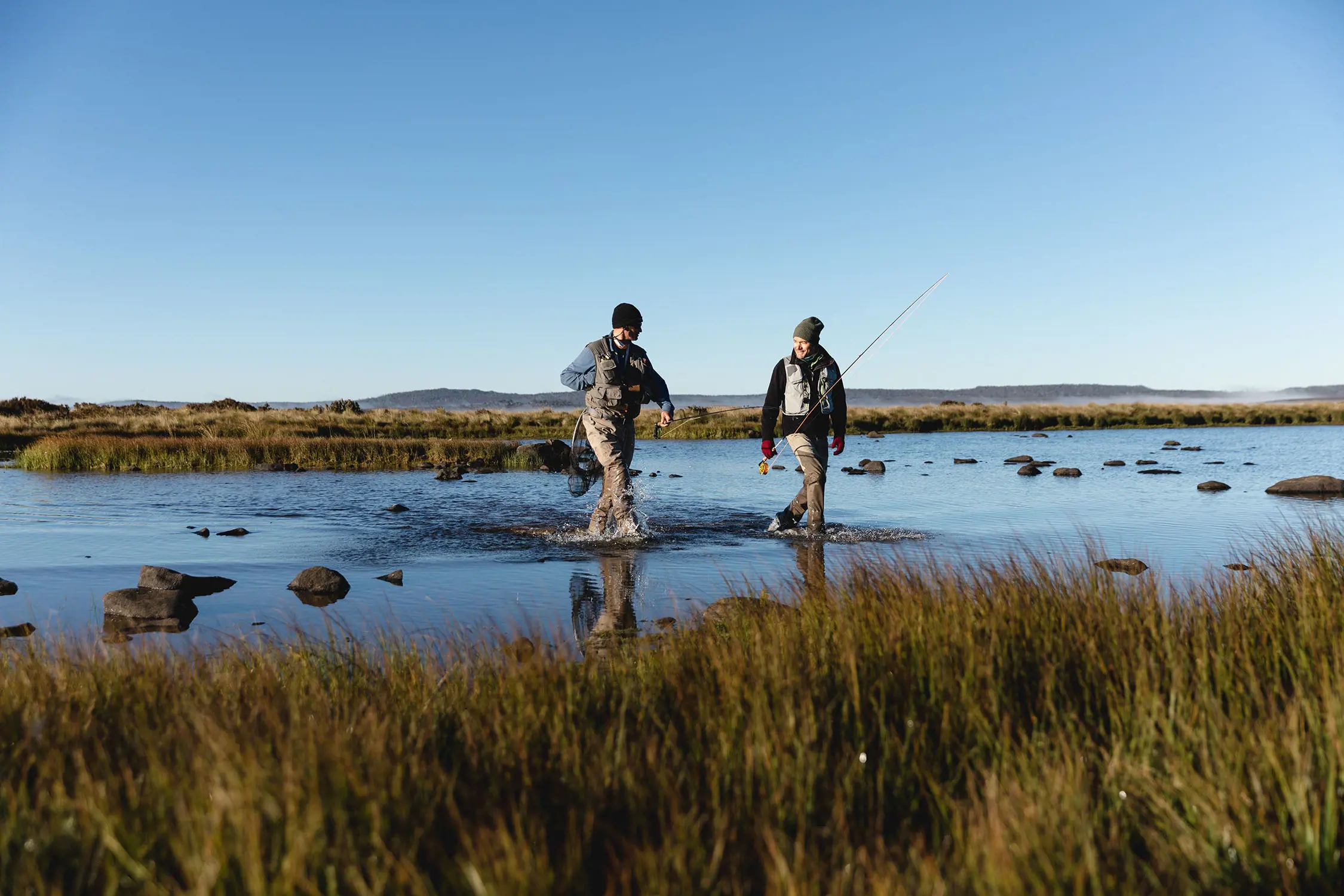
Fly fishing tours in Tasmania
Guided fly-fishing tours in Tasmania offer unforgettable and unique experiences on renowned rivers, streams, creeks and estuaries around the island. From beginners looking to learn the art of angling and families keen for a fun day out, to intermediate and expert fly fishers, you’ll find single and multiday outdoor adventures to suit everyone.
Frequently asked questions
Tasmania is a diverse fishery so there are plenty of options. For river fishing, head to Cressy, Deloraine and around Launceston for freestone rivers and small streams. The Midlands is a good choice for classic meadow rivers, while the south beckons with forested rivers and the estuaries of the Derwent and Huon Valleys. For lake fishing, the Central Highlands around Miena shouldn’t be missed.
Yes. Anyone over the age of 13 needs a fishing licence in Tasmania to fish for trout in any freshwater, unless you’re fishing in registered private fisheries such as Currawong Lakes, 28 Gates and Twin Lakes. Licenses are available online from the Inland Fisheries Service or at local tackle stores, with prices varying based on options from 48 hours, 7 days, 28 days, full season and even 5 years. Licences for children aged 14–17 are free – younger children don’t need a fishing licence.
There are two main trout fishing seasons in Tasmania:
- Brown trout season opens for most waters from the first Saturday in August (2 August 2025) to the Sunday nearest 30 April (3 May 2026).
- Rainbow trout season opens for most waters from the Saturday nearest to 1 October (4 October 2025) to the Sunday nearest 31 May (31 May 2026).
The best fishing starts around mid-October and runs through to mid-April.
You'll find key dates for the 2025–2026 fly fishing season in Tasmania on the Inland Fisheries website, along with a list of freshwater locations that are open all year.
The Tasmanian Inland Fishing Code, which is provided with your fishing licence, also has seasonal opening and closing dates, along with catch limits, size restrictions, time restrictions and fishing methods, which can change each year and vary from one water to the next.
Anglers can expect to mainly encounter wild brown trout and rainbow trout. There are also brook trout in places like Clarence Lagoon in the Central Highlands and Lake Plimsoll on the west coast. Tiger trout (brown and brook hybrids) are stocked in several private fisheries, including 28 Gates Farmstay.
Yes. For guided tour and fishery information, check in with Trout Guides and Lodges Tasmania (TGALT), Tasmania’s peak tourism trout guiding body. They can help you find accredited guides, lodge accommodation and private fisheries.
Most types of fly fishing are available on the island, but what really sets Tasmania apart from other destinations is the sight fishing. Anglers can expect to cast to rising, tailing and cruising trout and might also enjoy loch-style fishing in lakes and Euro-nymphing in rivers.
